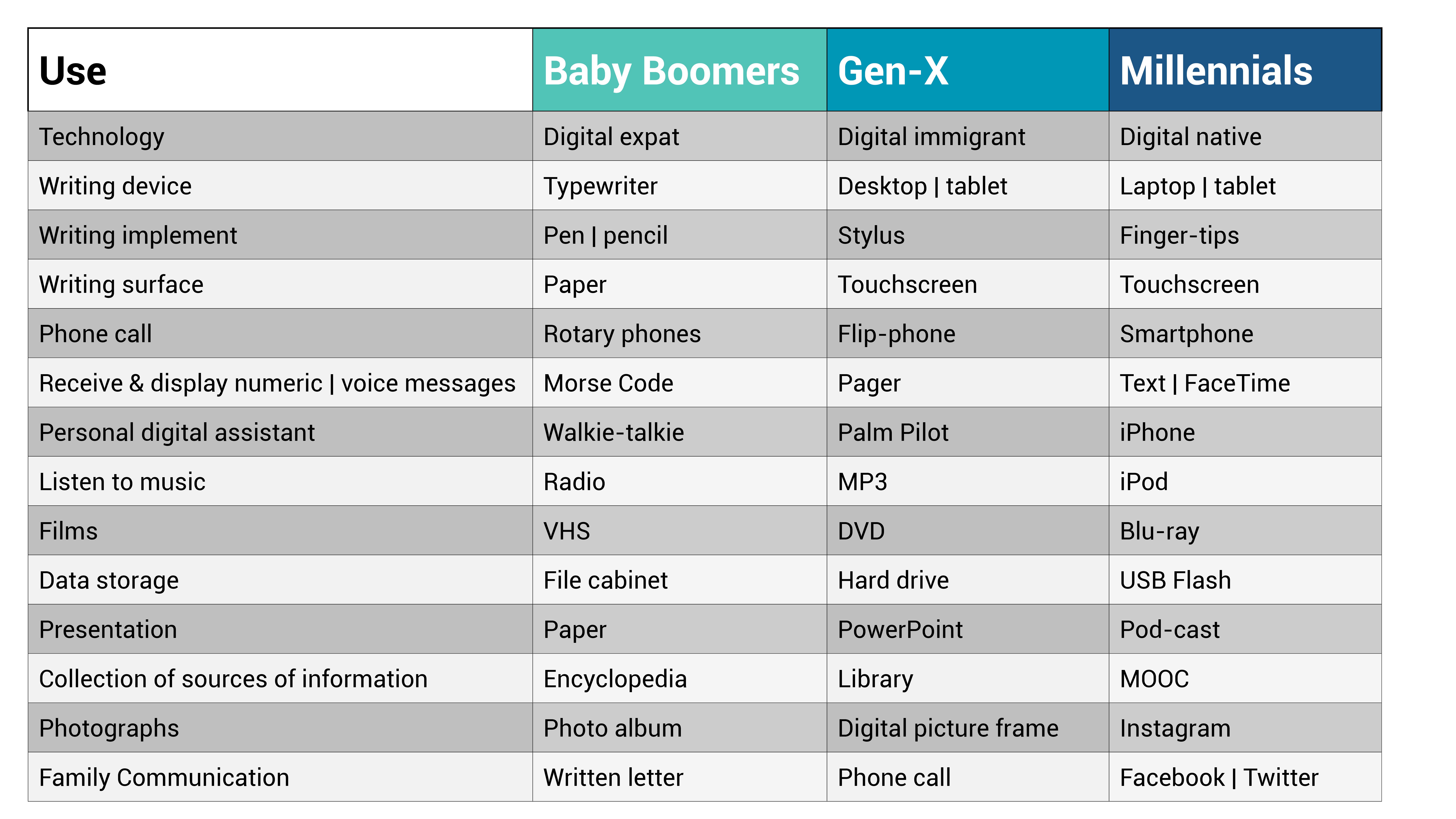 Each generation imagines itself to be more intelligent than the one that went before it, and wiser than the one that comes after it. ~George Orwell
Each generation imagines itself to be more intelligent than the one that went before it, and wiser than the one that comes after it. ~George Orwell
Education psychologist Dr. Robert Mayer once said, “Learning is a relatively permanent change in a person’s knowledge or behavior due to experience.” For instance, do you remember how to ride a bicycle? If you learned, probably so. But experience not only fuels and fortifies knowledge and behavior change; it also impacts how long those things last.
Research has found that humans begin learning even before birth, and this process naturally continues throughout life. The media spin on how people learn fluctuates. However, the classic learning theories — behaviorism, cognitivism and constructivism — these endure and remain relevant even in an era where computing power is de jour.
While people may process information differently, the truth is the brain is wired and neurons fire the same now as 50 years ago. The laws of learning and memory are still germane today irrespective of generational cohort. This begs the question: Is the workplace future-ready to create the experiences necessary to spark learning?
According to the Bureau of Labor Statistics, by 2024 the U.S. labor force is projected to reach 163.8 million. The internet and media is brimming with information on generational cohorts. Today there are largely three generational cohorts that make up the workforce: baby boomers, Generation X and millennials. Cohorts share the same maker events in their memories. Generation identity has a significant impact on how we view our lives and the world, which impacts how we learn, age and develop as human beings. To that point, across all generations there have been many influences that impinge on learning processes. But technology is one of the most influential.
While the laws of learning and memory have endured, technological advancements continue to revolutionize work and life across all generations. Further, it’s happening quickly. Technology advancements move rapidly, and the notion that technological advances have only affected and shaped millennial learning is a myth.
Technological forces have reshaped society across all generations. Ten years ago things were different, 20 years before that things were also different, and 30 years before that things were even more different, and so on. Technology has changed nearly every facet of the marketplace, workplace and workforce. It also has transformed how people consume and apply content.

As a result of the evolution of digital devices — see Table — generational cohorts have different attitudes about technology use and adoption in the workplace. Technology is a remarkable amplifier. It’s meant to enhance quality, not supplant the experiences created to fuel and fortify knowledge and behavior.
Similar to Maslow’s Hierarchy of needs — the theory of human motivation — adult learning is based on fundamental psychological needs. The ecosystem must be hyperfocused on tangible human needs for social existence and proven fundamental learning approaches to promote development. Here’s how learning leaders can do that:
- Make on-demand learning available 24/7. Employees want to diagnose their learning needs, set goals, choose what meets their needs, and monitor progress. A cloud-based learning management system is viable technology to allow easy access, mobile-ready content.
- Acknowledge knowledge and experiences. Employees want to learn about things that have an emotional connection, are problem centered and have relevance to their work and life. Using social, mobile, analytics and cloud technology helps erase geographical boundaries and facilitate fuel sharing and problem solving across the globe.
- Create collaborative, experiential and reflective settings. Employees want to collaborate, share experiences and exchange constructive feedback to fuel learning. Virtual simulations can evoke real-world and heightened experiences, and allow employees to experience vital interdependencies, make decisions and gain immediate feedback.
Ultimately, learning is a powerful force that transcends generational cohorts. Rather than become a casualty of media hype, as a practical matter, learning leaders can be optimistic that proven fundamental learning approaches can be employed to spark learning. However, those that understand learning processes and incubate learning with well-thought-out technological applications will be well-equipped to deliver the capabilities employees need, when and where they need them to move the business ahead.
Sydney Savion is head of the center for analytics, performance and information for Dell. To comment, email editor@CLOmedia.com















